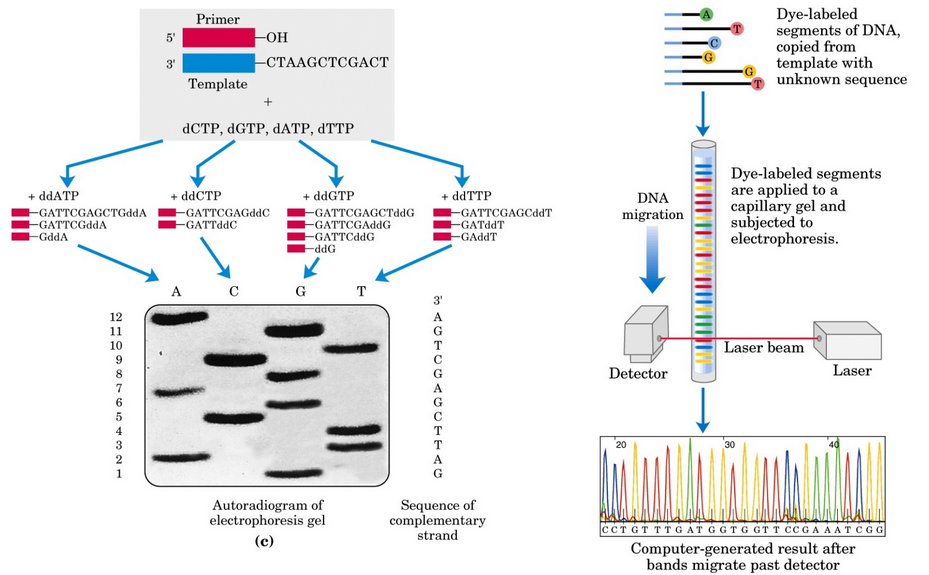7.4 Polymerase Chain Reaction
Figure 7.22: Polymerase Chain Reaction Schematic
In a typical polymerase chain reaction (i.e., PCR) setup (see figure 7.22), small amounts of DNA are selectively amplified in vitro.
PCR has many applications from diagnosis (i.e., introducing markers and mutations) to forensic analyses (e.g., small samples of Biological material like blood, semen, and hair).

Figure 7.23: Sanger Method for DNA Sequencing
The Sanger method in figure 7.23 can be used to sequence DNA.
7.4.1 Human genome project
This project was made possible via DNA sequencing technology. The word genome refers to the totality of an organism’s DNA; various organisms’ genome sizes are shown in figure 7.24:
Figure 7.24: Genomes Sizes of Organisms
Nonetheless, the human genome project unveiled about 3.2 billion base pairs in a human’s genome. Using the aforementioned data, one can have better understanding of human development, psychology, and medicine.
One can also understand the underlying molecular mechanisms of disease and design personalized therapeutics. However, there are also many ethical, social, and legal implications on the use of the human genome.